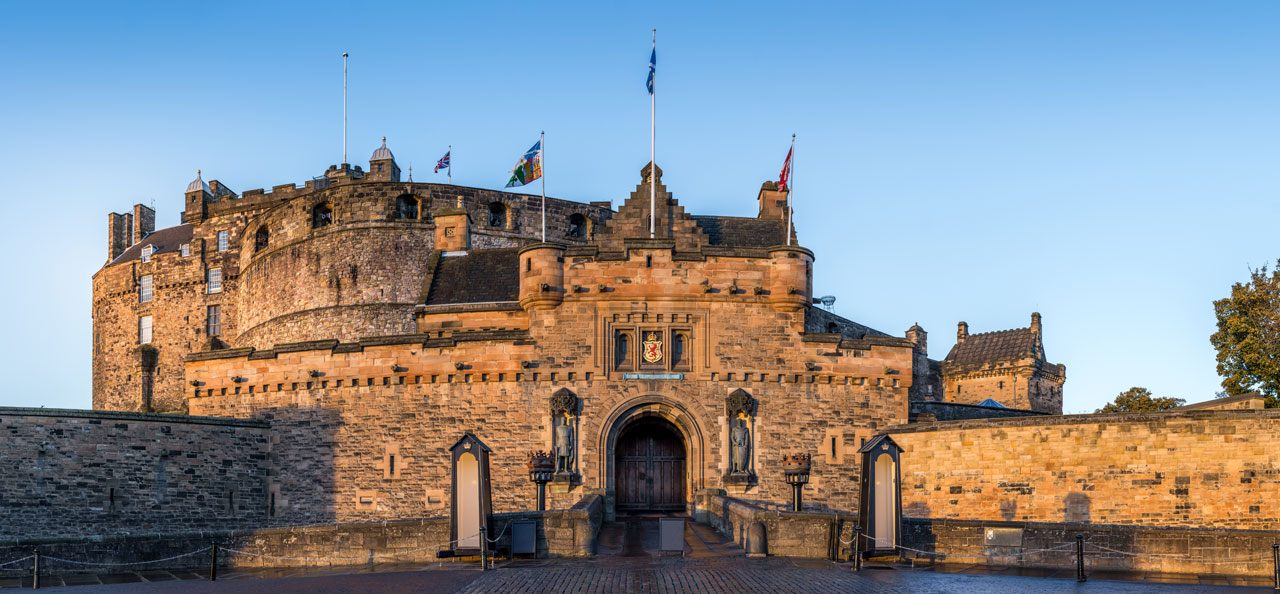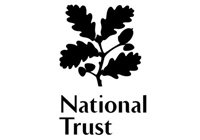- Home
- Scottish Castles
- Edinburgh Castle
Visit Edinburgh Castle

A brief history
Edinburgh Castle's origins are very ancient and reach back into prehistoric times. It has been a fortress since the 7th century but not until the 11th Century is there any reliable information on the castle.
Edinburgh Castle sits on a towering volcanic rock and dominates the city. The castle has been altered and added to so many times in its long life that its main features are now historical rather than architectural.
The oldest part of the castle is the tiny chapel of St Margaret, dating from the late eleventh century. It commemorates Queen Margaret, the sister of Edgar Atheling, king-elect of England following the death of Harold at the Battle of Hastings. Her chapel was the only part of the castle which Robert the Bruce allowed to remain standing when he captured the fortress from the English in 1313.
Although Edinburgh Castle has never succumbed to actual open assault, over the centuries it has received a terrible battering. In 1650 Cromwell's artillery bombarded the castle for three month. It was only when Cromwell threatened to blow up the rock with a mine did the occupants surrender.
Forty years later the castle was besieged for the last time when the Duke of Gordon held it for James II against William of Orange, when disease and starvation forced him to capitulate.
As such Edinburgh Castle grew into a significant military base. In 1757 the castle was converted for use as a prison. During the Napoleonic wars the castle held French prisoners, whose graffiti can still be seen, scratched onto the walls of the huge vaulted rooms under the Great Hall. Over the following decade it also held thousands of prisoners from the American Revolution and the Seven Years War.
In 1861 a practice began which continues to this day, the firing of the cannon every weekday on the castle ramparts to mark 1pm. This is the most effective time-check for the citizens of Edinburgh.
Castle Attractions
CHAPEL OF ST. MARGARET
Queen Margaret, who was later made a Saint, died at Edinburgh Castle in 1093. King David I, her son, built the chapel around 1130 in her honour and it is Edinburgh's oldest building.
It was used by the Royals as a private place of prayer up until the 16th century when it was used to store gunpowder. Its origins were forgotten and only rediscovered by the Scottish artist and antiquary Sir Daniel Wilson in 1845 when it was restored as a chapel.
The ornate arches are original but other features such as the stained glass windows are more recent. They were designed by Douglas Strachan, installed in 1922, and depict St. Andrew, St. Columba, St Margaret and Sir William Wallace, Scotland's greatest national hero.
MONS MEG
This intimidating cannon is massive and dates from the fifteenth century. Given to King James II in 1457, the six-tonne siege gun could fire a 150kg gunstone for up to 2 miles and she is named after the Belgian town where she was made.
In 1460, James II had Mons Meg hauled 80km to the siege of Roxburgh Castle. King James IV put Mons Meg back in action, first to attack Dumbarton Castle and then Norham Castle. Mons Meg finally retired around 1550 after serving in King James V's Navy.
After 75 years in England Mons Meg made it back to Edinburgh Castle in 1829. Cavalry and Infantry escorted her from Leith Docks to Castle Rock.
SCOTTISH NATIONAL WAR MEMORIAL
In 1919 Sir Robert Lorimer, a prolific Scottish architect and restorer of historic houses and castles, was commissioned to design and build the Scottish National War Memorial. The Memorial was opened in July 1927 by the Prince of Wales, later King Edward VIII, to commemorate the Scottish soldiers who died in the 1st World war.
In the Middle Ages St. Mary's Church stood on this site and it was converted into a munition house in 1540. In 1863 the building was given a much improved appearance by Robert Billings, a British Architect and Author.
The army vacated the building in 1923 and the Memorial also honours the men who fell in the Second World war of 1939 - 1945.
THE GREAT HALL
Built for King James IV and completed in 1511, it hosted grand state events and banquets. But James IV had little time to enjoy his new addition to the castle. He was killed at the Battle of Flodden in 1513, fighting the forces of his brother-in-law, King Henry VIII of England.
The Great Hall today displays a collection of weapons and armour that hint at its military past.
THE ROYAL PALACE
The Palace was the official residence of the later Stewart Kings and Queens. In 1566 Mary Queen of Scots gave birth to James VI in a small chamber known as Queen Mary's Room. James VI eventually succeeded Elizabeth I as James I of England in 1603.
THE CROWN ROOM
The Crown Room is a bomb-proof vault underneath the Royal Palace and houses The Scottish State Regalia: crown, sceptre and sword. The crown was last used for the coronation of Charles II at Scone in 1651. The sceptre was a gift from Pope Alexander VI. The sword was presented to James IV by Pope Julius II in 1507 and is an ornate Italian piece of craftmanship.
It is also home to the Stone of Destiny, Scotland's coronation stone which was returned to Scotland in 1996.
Location
Edinburgh Castle
Castlehill, Edinburgh EH1 2NG
Official website: Edinburgh Castle

